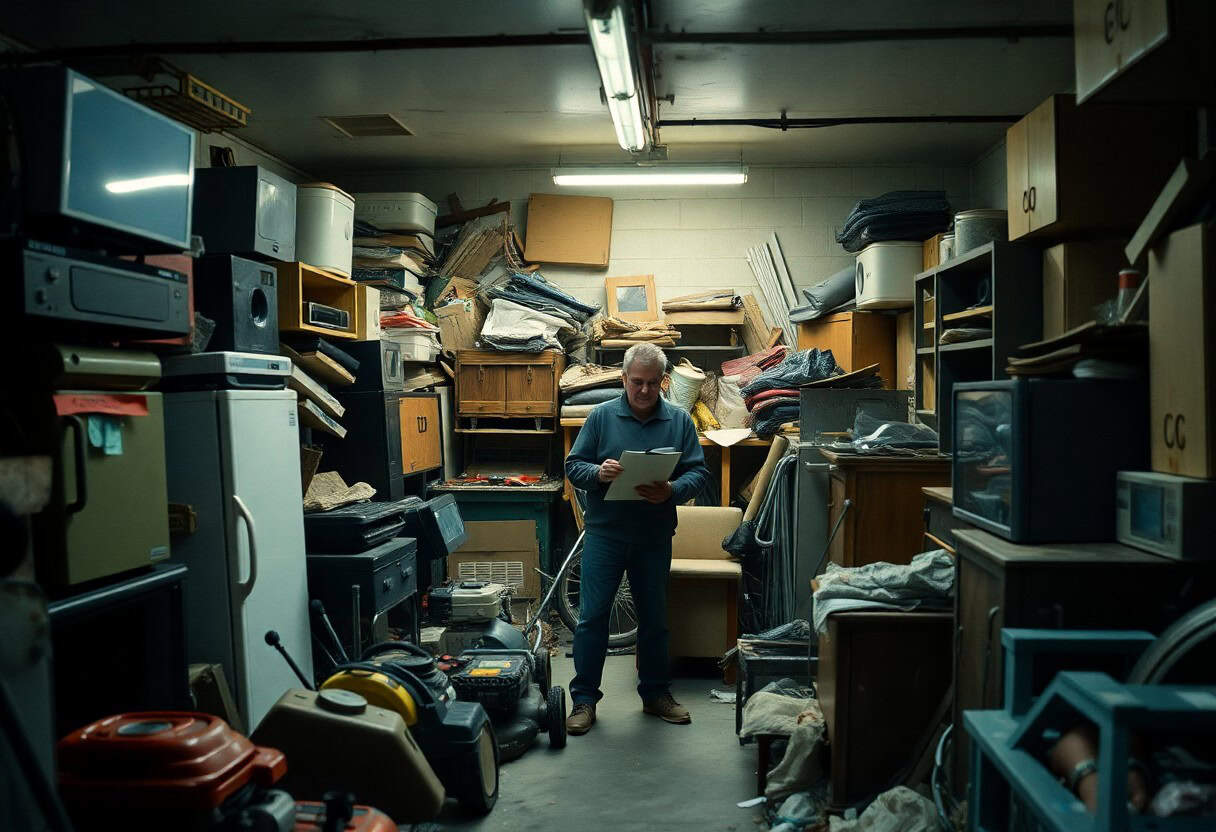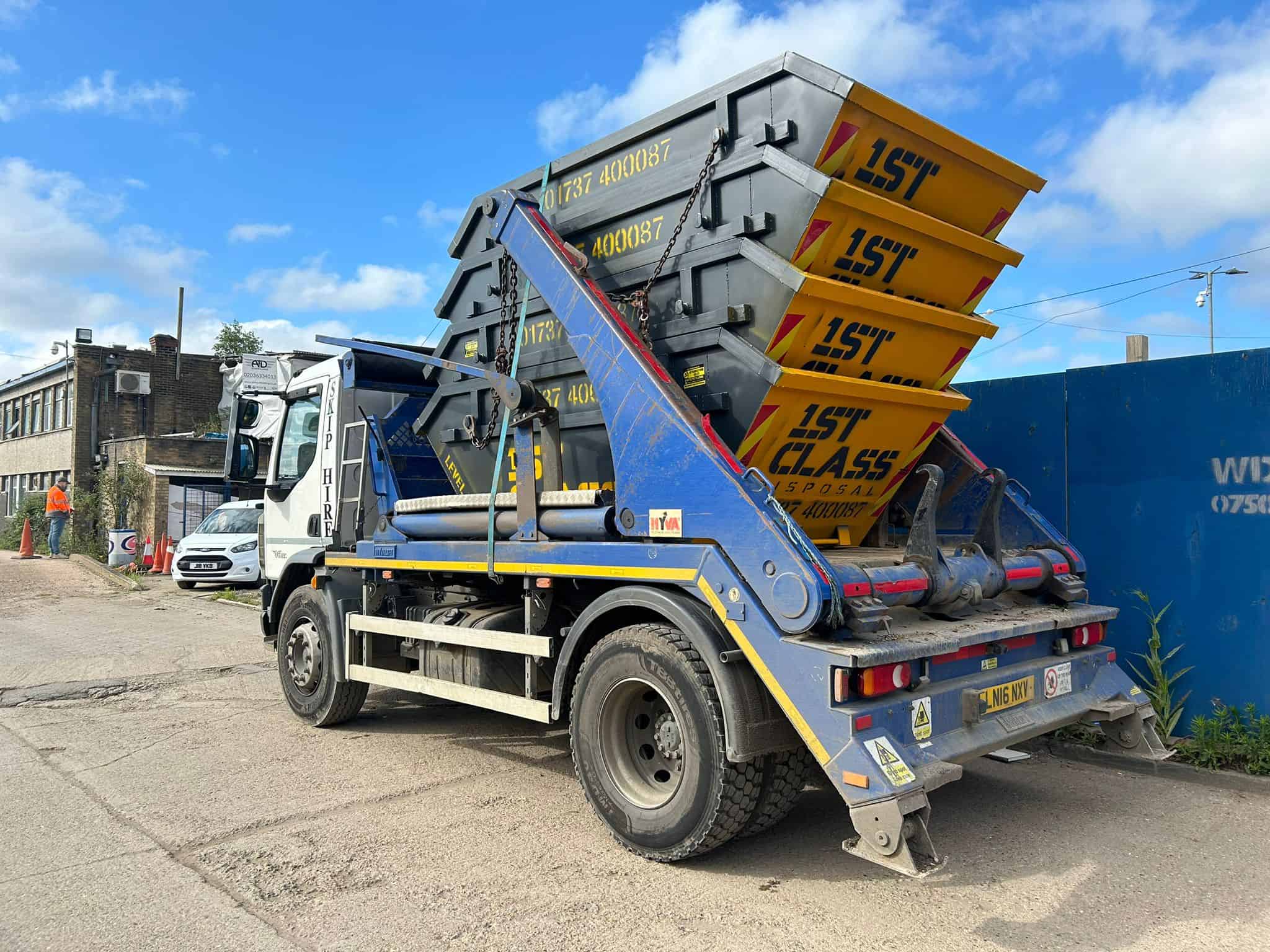Waste disposal can often become a complex affair, especially when it comes to unusual items that you might not know how to handle. In this guide, you will discover which items are acceptable for skip hire and which are considered hazardous or prohibited. Understanding these guidelines will help you avoid unnecessary fines and ensure that your waste is managed responsibly. Take the time to learn about the various categories of waste, as it can make a significant difference in your waste removal experience.
Types of Unusual Items for Waste Removal
A wide array of items fall under the category of unusual waste. These items often require special handling and disposal methods. Understanding their types can help you manage your waste more efficiently. Here’s a brief overview:
| Item Type | Description |
|---|---|
| E-Waste | Old electronics that need proper disposal. |
| Hazardous Materials | Substances that pose risks to health and the environment. |
| Bulk Items | Oversized items that require special collection. |
| Construction Waste | Debris from building or renovation projects. |
| Garden Waste | Organic debris from your garden. |
Perceiving the different types of unusual waste allows you to dispose of them responsibly and efficiently.
E-Waste
With the rapid advancement of technology, you may find yourself with an abundance of electronic waste or e-waste. This includes old computers, smartphones, and televisions that require careful disposal due to the toxic materials they contain. You must locate dedicated recycling centres to properly handle e-waste, ensuring that valuable resources are recovered rather than ending up in a landfill.
Hazardous Materials
Clearly, the disposal of hazardous materials cannot be taken lightly. Items such as batteries, paint, and chemicals present significant health and environmental risks. Therefore, you should always refer to local guidelines for proper disposal methods.
Waste that contains hazardous substances must be treated with utmost care. Certain materials can leach into soil and water, causing serious ecological damage. As you handle such waste, ensure you wear protective gear and utilise designated drop-off points that comply with regulations. It is your responsibility to keep both yourself and the environment safe from hazardous exposures.
Bulk Items
Items such as old furniture, appliances, and mattresses may fall into the category of bulk items. These oversized items often require special scheduling for collection or disposal services. You should contact your local council or waste disposal service to arrange pick-up or drop-off options to manage these items properly.
Types of bulk items may include unwanted furniture, garden waste, and large appliances. Disposing of these items often necessitates specific vehicles and equipment due to their size. It’s necessary to follow local waste management rules to ensure that your disposals are effective and compliant, helping you maintain a clean and clutter-free space.

Tips for Effective Waste Removal
Assuming you want to maximise your waste removal efficiency, consider these important tips:
- Sort your waste to enhance recycling efforts.
- Plan your removal schedule to avoid last-minute rushes.
- Enlist help to manage larger or more cumbersome items.
- Utilise appropriate containers to prevent spills.
The knowledge of effective strategies can significantly improve your experience when dealing with waste.
Know Local Regulations
For efficient waste removal, it is crucial to be aware of local regulations. These can dictate what items can be disposed of in your standard bin and which ones require special handling, ensuring you comply with legal requirements and avoid penalties.
Use the Right Tools
Tools are paramount when it comes to efficient waste removal. Some items may require specific equipment for safe handling and disposal to prevent injury or environmental damage.
Local waste management practices often recommend having a range of tools on hand, such as protective gloves, heavy-duty bags, and shovels for larger items. Using the right tools ensures that you safely manage your waste while protecting your health. Avoid using inadequate equipment, as this can lead to accidents or mishandling of hazardous materials. Investing in quality tools can enhance your waste management and provide peace of mind during the process.
Step-by-Step Guide to Waste Removal
Now, you can simplify your waste removal process by following this step-by-step guide. Start with an assessment of landfill prohibited materials and appropriate disposal options. Here’s a breakdown:
| Step | Action |
| 1 | Assessment of waste |
| 2 | Preparation for waste removal |
| 3 | Execution of the removal |
Assessment
The first step involves assessing the type of waste you have. Determine whether your items are hazardous, recyclable, or suitable for general disposal. This will help you decide the correct disposal method, ensuring safety and adherence to local regulations.
Preparation
Assuming you’ve identified your waste’s category, prepare by sorting your items accordingly. Gather any necessary materials such as containers, bags, or protective gear to facilitate the process. This proactive approach not only makes the task more manageable but also prevents contamination.
It is advisable to ensure that all items are securely packed to avoid any spillage or leakage during transport. You want to maintain a clean environment and protect yourself while handling possibly hazardous materials. This stage is necessary for promoting safety and compliance with regulations.
Execution
The next step is the execution of your waste removal plan. Carefully transport your sorted waste to the appropriate disposal location, ensuring that you stick to the guidelines established during the assessment phase.
Removal of waste requires a methodical approach to guarantee that your disposal is effective and environmentally friendly. Use the correct routes and processes to dispose of your waste and avoid any potential fines or legal issues that may arise from improper disposal.
Factors to Consider Before Skipping
To ensure efficient waste removal, consider the following factors before deciding to skip:
- Type of waste you are disposing of
- Environmental regulations in your area
- Cost implications
- Volume and weight restrictions
- Availability of skips locally
After weighing these considerations, you can make an informed choice about your waste disposal needs.
Environmental Impact
Little changes in your waste disposal approach can have a significant environmental impact. By understanding how your decisions affect landfill usage and recycling rates, you can help minimise your ecological footprint. Choose to prioritise environmentally-friendly options when skipping.
Cost Considerations
Some factors can directly affect the overall cost of using a skip, including the size of the skip and the type of waste you’re disposing of. Skip hire rates can vary, and it’s advisable to shop around to find the best deal that suits your needs.
Another important aspect to consider is the potential for additional fees related to overloading or improper waste disposal. By understanding the regulations and requirements specific to your skip hire service, you can avoid unnecessary costs and make the most of your budget.
Volume and Weight Restrictions
While you may be eager to dispose of as much waste as possible, it’s important to be aware of the volume and weight restrictions associated with skip hire. Each skip has a maximum capacity that must not be exceeded to avoid penalties.
To ensure your skip is within the allowed limits, you may need to separate your waste or make multiple trips. Familiarise yourself with the specific limits set by your skip hire provider to prevent any complications or additional charges during your waste removal process.
Pros and Cons of Skipping Waste Removal
Once again, understanding the pros and cons of skipping waste removal can significantly enhance your decision-making process. A skip can streamline the disposal of unwanted items, but there are also potential downsides to consider.
Pros and Cons
| Pros | Cons |
|---|---|
| Convenient for large amounts of waste | Can be costly if not managed properly |
| Reduces clutter at home | Limited to specific waste types |
| Time-saving | Risk of penalties for illegal dumping |
| Environmentally friendly if sorted correctly | Potential for extra charges on heavy waste |
| Flexible rental periods | Not suitable for hazardous materials |
An advantage of using a skip is the convenience it provides when you’re tackling a large clear-out. With various sizes available, you can select one that suits your project, making waste disposal straightforward and efficient.
Disadvantages
Clearly, opting for a skip can have its downsides. Aside from possible financial implications, such as hidden fees, you might face limitations on the types of waste you can dispose of, leading to more complicated disposal methods for prohibited items.
Cons of skipping waste removal include the need for careful planning and awareness of your local regulations to avoid any issues. If you improperly dispose of hazardous materials, you might incur substantial fines. Additionally, if you exceed weight limits, extra costs may arise that can turn an initial budget-friendly choice into an expensive decision. It’s vital to check You Should Avoid Putting These Items in Your Skip to prevent complications.

Best Practices for Sustainable Waste Disposal
Not everyone is aware that effective waste disposal goes beyond merely throwing rubbish away. It’s crucial you adopt best practices that prioritise sustainability. This includes understanding the impact of your waste, actively reducing what you consume, and opting for eco-friendly disposal methods when possible. You can significantly lessen your environmental footprint by recognising these practices in your daily life.
Recycling Options
If you want to contribute to a more sustainable planet, consider the variety of recycling options available to you. Many local councils offer tailored recycling services for different materials, such as paper, plastics, and metals. Additionally, some recycling centres accept unusual items — from electronics to textiles — that you may not know can be processed. Research your local recycling facilities to make the most of your waste disposal efforts.
Donation Opportunities
Even as you declutter your home, consider that many items still possess value and can help others in need. Donating belongings you no longer use is a fantastic way to ensure they don’t end up in a landfill while simultaneously aiding your community.
It is crucial to assess the items you intend to donate carefully. Ensure that they are clean, functional, and in good condition. Many charities accept clothing, household items, and even furniture. Be cautious, as dangerous items, like electronics or hazardous materials, should never be donated. By donating responsibly, you can make a positive impact and help those less fortunate while also keeping your waste to a minimum.
Conclusion
Following this guide, you can confidently navigate the tricky terrain of waste removal for unusual items. Understanding what you can skip and what requires special handling will streamline your decluttering process. For further insights, explore A Guide to Getting Rid of Almost Everything to enhance your approach to waste management. Equip yourself with the knowledge needed to effectively manage your items and keep your space clutter-free.
FAQ
Q: What kind of unusual items can you skip for waste removal?
A: Skips are usually designed for general waste, but many companies allow certain unusual items such as furniture, garden waste, appliances, and construction materials. However, not all skips accept hazardous waste like chemicals or tyres, so it’s advisable to check with your local skip hire company for specific guidelines on what is permissible.
Q: Are there any restrictions on sizes of items that can be skipped?
A: Yes, there are often restrictions regarding the size of items placed in skips. Most companies provide a list of size limits, ensuring the items fit within the dimensions of the skip and do not exceed weight limits. Larger items may require special arrangements, such as disassembly or moving them to a more accommodating disposal site.
Q: How can I find out if my unusual item can be placed in a skip?
A: The best approach is to contact your local skip hire provider directly. They can offer guidance on specific items and their policies. Additionally, many companies provide online resources or FAQs that outline what types of items are acceptable for waste removal.
Q: Is it more expensive to skip unusual items compared to regular waste?
A: The cost of hiring a skip can vary based on the type and quantity of waste being disposed of. Unusual items that require special handling or are categorised as bulky may incur additional charges. Therefore, it’s advisable to discuss potential costs with your skip provider in advance to avoid unexpected fees.
Q: What happens to unusual items after they are removed?
A: Once unusual items are collected, the waste removal company typically sorts through them at their facility. Items that can be recycled are separated and sent to appropriate processing centres, while those that cannot be recycled are disposed of in landfills. Many companies aim to maximise recycling efforts and reduce the amount of waste sent to landfills.


